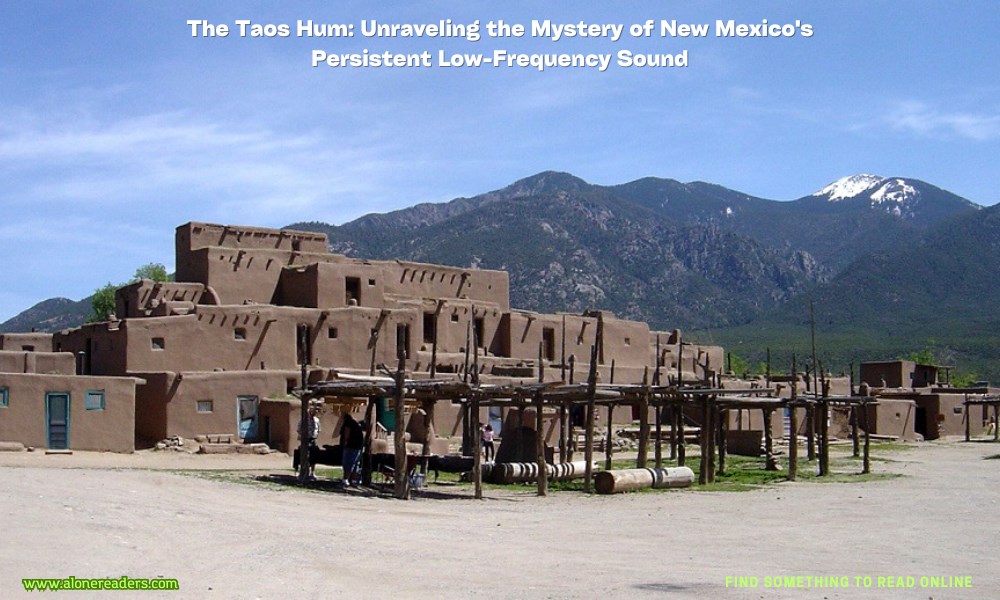
Nestled in the scenic landscape of northern New Mexico, the town of Taos is renowned for its rich history, vibrant art scene, and breathtaking vistas. However, since the early 1990s, Taos has gained fame for something far more enigmatic: the Taos Hum. This persistent low-frequency sound, heard by residents and visitors alike, has become one of the most intriguing acoustic mysteries of modern times. Despite numerous investigations, the source of the hum remains unidentified, leading to a myriad of theories and speculations.
The phenomenon of the Taos Hum first came to widespread attention in 1993 when local residents began reporting a persistent humming noise. Described as a low-frequency droning, akin to the distant rumble of a diesel engine, the hum is not universally heard. In fact, surveys have shown that only a small percentage of the population in Taos hears the sound, leading to further intrigue and a slew of scientific and pseudoscientific investigations.
The hum has been described in various ways: some hear it as a low, distant noise, while others perceive it as a vibration. This inconsistency in perception has made the Taos Hum particularly challenging to study. Early efforts to identify the source included extensive environmental surveys and sound level measurements, but these investigations yielded no conclusive results. Researchers from the Los Alamos National Laboratory, the University of New Mexico, and Sandia National Laboratories all took part in attempts to unravel the mystery, yet the origin of the hum remained elusive.
Several theories have been proposed over the years to explain the Taos Hum. One of the most popular scientific explanations is that the hum is the result of low-frequency electromagnetic radiation. This radiation could stem from industrial equipment, high-voltage power lines, or even natural sources such as the earth’s geomagnetic activity. However, none of these sources have been definitively linked to the hum, and the theory remains speculative.
Another scientific hypothesis suggests that the hum could be caused by infrasonic sound waves, which are below the range of human hearing. These infrasonic waves could be generated by natural phenomena such as ocean waves, atmospheric turbulence, or seismic activity. Again, while this theory is plausible, it has not been proven conclusively.
On the more speculative side, some have suggested that the Taos Hum is a form of auditory hallucination or mass psychogenic illness. This theory posits that the hum could be a psychological phenomenon, where a group of people becomes convinced that they are hearing a noise that does not actually exist. This explanation, however, does not account for the physical sensations and the consistent description of the hum by those who hear it.
One of the more outlandish theories links the Taos Hum to secret government projects or extraterrestrial activity. Proponents of this idea suggest that the hum could be the result of clandestine military experiments or alien communications. While these theories are often dismissed by the scientific community, they contribute to the hum’s allure and the broader cultural fascination with unexplained phenomena.
The Taos Hum has not only captivated scientists and conspiracy theorists but also inspired artists and writers. It has been referenced in literature, music, and television, becoming a part of the cultural fabric of Taos. For those who hear the hum, the experience can range from mildly annoying to deeply disturbing. Some report that it affects their sleep, concentration, and overall quality of life. The persistence of the hum, despite numerous attempts to identify its source, has led to a sense of resignation among many residents.
Despite the lack of a definitive explanation, efforts to understand the Taos Hum continue. Advances in acoustic technology and a growing interest in the study of low-frequency sounds may eventually shed light on this enduring mystery. In the meantime, the Taos Hum remains a fascinating example of how modern science and ancient mysteries can coexist, challenging our understanding of the natural world.
In conclusion, the Taos Hum represents one of the most enduring and puzzling acoustic phenomena of our time. Its persistent nature, coupled with the inability to identify a clear source, has led to a wide array of theories and speculations. Whether the hum is ultimately found to be a product of natural processes, human activity, or something entirely different, it continues to capture the imagination and curiosity of those who encounter it. For now, the Taos Hum remains an unresolved mystery, a low-frequency echo of the unknown that resonates through the high desert of New Mexico.